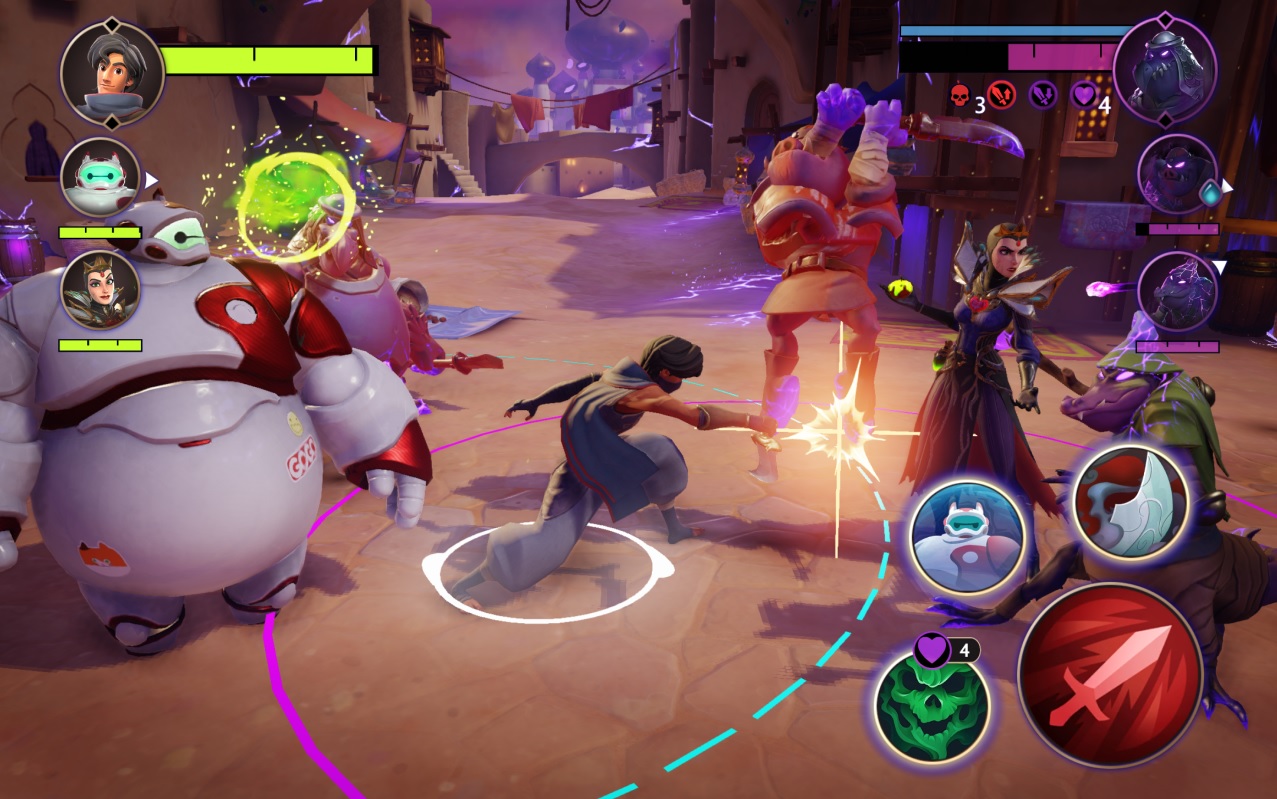I’m not a big mobile gamer. Touch screen controls still feel weird after a lifetime of mouse, keyboard, and controllers. And too many mobile games embrace predatory pay schemes by offering the initial game for free, then dangling everything you need just out of reach, stuck behind paywalls and endless ads.
But I’m absolutely obsessed with Disney Mirrorverse.
Friend Like Me
On the surface, Mirrorverse is yet another free-to-play gacha game. A gacha game features lots of playable characters that can only be earned through random loot boxes (or crystals, in the case of Mirrorverse).
Gacha games include Fire Emblem Heroes, Raid: Shadow Legends, and Genshin Impact. Players want (and in most cases, need) to earn more powerful, and more rare, characters to progress. The only recourse is to get lucky with opening boxes. Or purchase in-game currency with real-world currency and go wild.
In the case of Mirrorverse, players can earn crystals that contain Mirrorverse versions of Disney and Pixar heroes and villains. Mulan, Ariel, Maleficent, Maui, Baymax, Captain Jack Sparrow, and Mickey Mouse are among the 40+ characters at launch.
Each hero and villain wields cool new weapons and an outfit that could make them a superhero, or a fantasy adventurer. Belle wields a robe and staff and heals her allies. The Evil Queen sprays her opponents with debuffing poisons. Maui’s tattoos glow brightly while he swings his magic fishhook.
Characters come in four different classes: support, tank, melee, and ranged, and five different rarity levels, ranging from one to five stars.
Higher-star heroes are rarely found in crystals — out of the maybe 10 hours I’ve played of Mirrorverse, I’ve only found one hero that’s four star or above (Frank Wolff from Jungle Cruise, ugh). Four-star characters (and above) unlock special Signature abilities, making them highly valued. But 3-star heroes have been perfectly viable for me so far. I’m able to take on stronger threats, and I’ve enjoyed discovering new team combinations and synergies.
Let’s Get Down to Business
Combat in Mirrorverse is real-time. You begin with only one character on your team. Soon you unlock two more slots to take three characters into battle, and can freely swap between them. I love that each character has a special ability that can be triggered regardless of which person you’re currently controlling.
Battles are fast-paced, yet strategic. I’m no master of dual thumb touch-screen, but I became adept at dodging enemy attacks, repositioning, and timing my strikes to interrupt enemies.
Enemies are made up of generic grunts in each class, as well as evil, shadowy versions of the player characters called Fractured. It’s kind of lame to fight mirror versions of your own characters (and clearly a way to save on animations and models), but at least there are a lot of them.
Enemies and characters have power levels, which is a single number that represents a character’s level, stats, star-rating, and abilities. I found the power rating to be fairly accurate when determining how strong a team I need to bring. A team of three characters that adds up to 2,200 power could barely make it through a 2,300 power level, for example, but requires a lot of careful micromanaging from me. Whereas if I exceed a level by 400 or 500 power, I can easily set the combat to auto without any worries.
 A Whole New World
A Whole New World
In addition to an eight-chapter main campaign, I can engage in supply runs to earn more xp motes and upgrade gems, limited run events with themed restrictions, and dungeon crawls, where a single team tries to make it as far as they can.
There’s a ton of content, and energy (which is spent to play anything, common in most free-to-play games) is plentiful thanks to crystal crafting.
Every two, four, eight, or 12 hours I can craft a crystal. This crystal has a small chance to include a hero (usually one-star). More often it includes an energy potion. Thanks to constantly crafting these crystals, I have literally dozens of these potions. I can easily drain my energy going on auto supply runs, then replenish them and engage in more challenging missions.
All the while I’m earning additional xp motes and crystals by completing daily quests, activities, and achievements. It’s a smart system without the bombardment of annoying ads. Even the in-game store offers free purchases every few hours, smartly encouraging me to keep logging back in.
I’ve yet to spend a dime on Disney Mirrorverse. I haven’t event spent very many orbs (earned currency used to purchase crystals), as I like to wait until I can purchase the big bundle packs that include gold and gems. I’ve been unlucky with crystals thus far (my daughter has played maybe 1/4 as much, and she managed to snag a 5-star Hercules!), but I still love playing, and find reasons to log in every day.
Not since the early days of Pokémon Go have I enjoyed a mobile game this much. Hopefully the developers can keep content flowing regularly to keep me coming back. And there’s certainly no shortage of characters they can add.
Disney Mirrorverse is free-to-play on iOS and Android mobile devices. It’s rated T for Teen.


